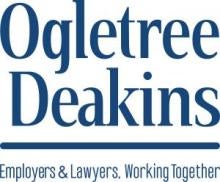The California Senate recently passed legislation (Senate Bill No. 84) that would require a plaintiff to give a qualified business notice and 120 days to cure an accessibility violation before filing a lawsuit seeking statutory damages and attorneys’ fees. The bill would create the nation’s first true safe harbor for businesses with fifty or fewer employees who are willing and able to address any barriers to access in 120 days. The bill now heads to the California Assembly.
Quick Hits
- The California Senate has passed SB 84, which mandates a 120-day notice and cure period for accessibility violations before a plaintiff can file a lawsuit seeking statutory damages and attorneys’ fees.
- SB 84 aims to create a safe harbor for businesses with fewer than fifty employees, allowing them to address accessibility barriers within 120 days to avoid statutory damages and legal fees.
- If enacted, SB 84 would provide a “fix-it-first” pathway for small California businesses, potentially influencing similar federal protections in the future.
Landscape of Disability Access in California
California has long occupied center stage in the national conversation on accessibility litigation. High statutory penalties, no-fault liability, and liberal fee-shifting rules have turned the Golden State into a magnet for plaintiffs’ lawyers who focus on “construction-related accessibility claims” under both the federal Americans with Disabilities Act (ADA) and parallel state statutes, such as the Unruh Civil Rights Act (Unruh). Senate Bill 84 (SB 84) represents Sacramento’s most consequential attempt in nearly a decade to recalibrate that landscape.
California Civil Code §§ 52 and 54.3 authorize minimum statutory damages of $4,000 per visit for accessibility violations—subject to trebling—plus mandatory attorney’s fees. Those generous remedies, combined with federal ADA claims, led to a wave of high-frequency lawsuits in California, many filed by professional plaintiffs. Small businesses frequently complained that a single missed sign or faded parking stripe could trigger five-figure settlements. Prior reforms tried to soften the blow, but largely preserved strict liability and allowed litigation to multiply. By 2024, legislators faced mounting pressure to extend genuine “fix-it first” opportunities and curb perceived litigation abuse. SB 84 is the legislature’s answer.
SB 84’s New Requirements, Protections, and Limitations
Under SB 84, a party intending to seek statutory damages would be required to first serve a detailed letter “specifying each alleged violation” on the defendant. A lawsuit for statutory damages may not be filed unless—or until—those alleged violations remain unremedied 120 days after service. If the business corrects every cited violation within the 120-day window, it owes no statutory damages, plaintiff’s attorney’s fees, or costs for those items. This is a true safe harbor, rather than the mere possibility of damages reduction under certain existing circumstances.
It is important to note that SB 84 would only apply to defendants that have fifty or fewer employees overall. Businesses with more employees would remain subject to pre-existing rules. SB 84 also does not limit an individual’s right to sue for an injunction and does not disturb a court’s equitable powers.
Key Takeaways
- If passed, SB 84 would provide a genuine “fix-it-first” pathway for California businesses with fifty or fewer employees, rendering them immune from statutory damages and fees if they repair cited violations within 120 days.
- SB 84 would only benefit businesses with fifty or fewer employees, although plaintiffs’ lawyers may provide notice to other businesses not knowing how many employees they have.
- Consider designating a compliance officer (in-house or external) to triage any notice letter so they are not missed. A handful of plaintiffs already provide “pre-litigation” notice of alleged violations and clients overwhelmingly report never receiving the notice.
- Under SB 84, the clock on the time to cure the alleged violations starts ticking from the date of service, not the date the recipient opens the mail.
- Businesses may want to take swift action in response to a notice letter, because 120 days passes quickly. Some architectural violations can be resolved quickly, such as adding accessible parking signage or adjusting the toilet paper dispenser location. However, many violations take time to assess and correct, such as adding ramps or correcting excessive sloping. This is especially where landlord/tenant buy-in or permitting is required.
- “Notice and cure” bills requiring advanced notice under the ADA are regularly introduced in the U.S. Congress. Passage of SB 84 in California could clear the way to there being some chance that federal protections may follow.





 />i
/>i
